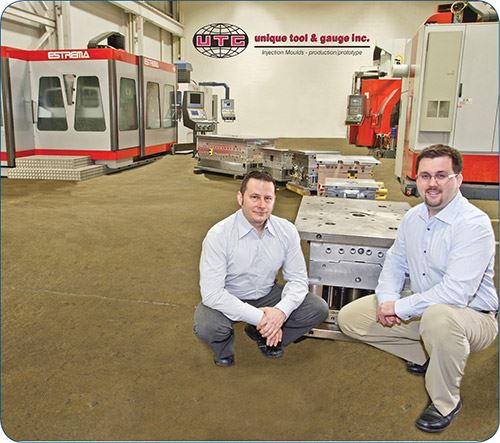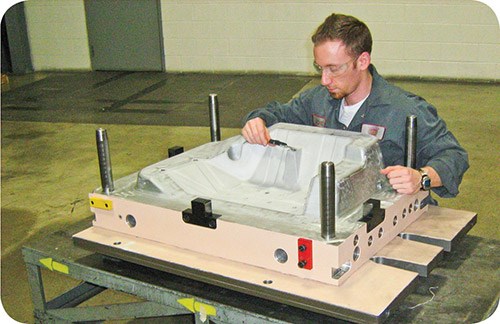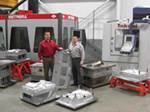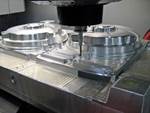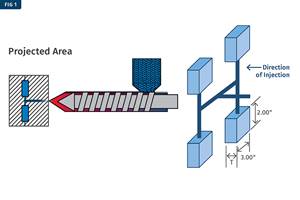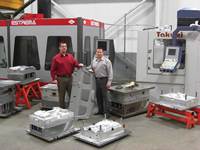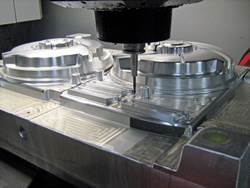Production Aluminum Tooling: What's Holding You Back?
It might be time to pursue aluminum molds in applications where traditional P20 steel has been specified without giving serious thought to any alternative.
Quality. Cycle time. Cost. These four words define the business-success paradigm for today’s injection molder, particularly those who serve the automotive industry. Now, if there were a technology available to you that could help you in all three of these critical areas, and it wouldn’t require new investments in machines, wouldn’t force wholesale replacement of your workforce, and wouldn’t change much of anything except for improvements to your bottom line, could you afford not to pursue it?
That technology exists today in the form of aluminum tooling for high-volume automotive applications, and it’s high time that aluminum should be a material of choice in applications where traditional P20 steel has been traditionally specified without giving serious thought to any alternative.
Today, toolmakers can produce an automotive production mold faster and at lower cost in aluminum than in P20 steel, and aluminum tools will run at cycle times anywhere from 30% to well above 50% shorter than with steel. What’s more, at half to one-third the weight of a P20 steel tool, there is less wear and tear on the molding machine with aluminum. Thus, aluminum tooling is not only a high-performance molding technology, it’s an energy saver and a cost saver. (See Part I of this series, Jan. 2010.)
So, where are the roadblocks and barriers to success with aluminum tooling? We’ve found that our hot-runner supplier/partners are utilizing their existing technology successfully on aluminum tools. In a similar way, our mold simulation supplier/partners have no difficulty working with aluminum tooling. No roadblocks there.
As discussed in Part II of this series (May 2010), tool maintenance is different with aluminum because different welding techniques are required. Also, attention is required to prevent a color mismatch after welding, which can become an issue if the tool is to be textured. Yet, our experience is that any good welder familiar with steel tools can be readily trained to work with aluminum. Welding aluminum is different, but it’s not more difficult.
Is there operator training involved? Sure. It’s important to remember that cycle times are significantly shorter with aluminum than steel because of aluminum’s higher thermal conductivity. If you were to set up a press to run with the same molding process for an aluminum tool as you would for a P20 tool, which would involve longer fill, pack, and hold times, you’d typically see the part come out of the aluminum tool with some pin push, as well as a lot of drag marks or stress marks. If that happened with a steel tool, you’d probably lengthen the molding cycle, thinking that would alleviate the problem. In aluminum it would make things worse.
Also, we’ve seen aluminum tools put in presses that are too big, with more clamp pressure than needed, and then shot size can become a problem in relation to barrel capacity. Of course, that can be an equal problem with steel tools. The big difference with aluminum is that, with reduced cycle times and clamp pressures, you’ll be looking to optimize your molding operations on smaller machines that have a smaller footprint and result in lower operating expenses for your molding operation.
Run aluminum tools on smaller machine with reduced clamp tonnage. You don’t want to over-clamp and close up all the parting lines or vents. Allow aluminum tools to breathe to remove the gases that build up. Open and wipe down the tools after each shift to remove any residue that might build up due to gases. Many tool builders recommend this practice for steel tools, as well.
Finally, it’s our contention that if an aluminum tool is run properly it will typically produce a higher quality part. Aluminum conducts heat better than steel. As a result, there are typically fewer hot spots in aluminum than are common in a P20 steel mold. Resins also flow faster, and set up faster. There are fewer stresses in parts coming out of the mold.
Does this mean steel is on its way out? Not likely. Our firm still builds plenty of steel tools as well as aluminum tools. Nonetheless, it’s our belief that aluminum tooling has earned its place for large production runs in the automotive industry—and in any industry for that matter.
Related Content
Is There a More Accurate Means to Calculate Tonnage?
Molders have long used the projected area of the parts and runner to guesstimate how much tonnage is required to mold a part without flash, but there’s a more precise methodology.
Read MoreThe Effects of Time on Polymers
Last month we briefly discussed the influence of temperature on the mechanical properties of polymers and reviewed some of the structural considerations that govern these effects.
Read MoreBack to Basics on Mold Venting (Part 2: Shape, Dimensions, Details)
Here’s how to get the most out of your stationary mold vents.
Read MoreWhere and How to Vent Injection Molds: Part 3
Questioning several “rules of thumb” about venting injection molds.
Read MoreRead Next
Why Aluminum Tooling Makes Sense for High-Volume Automotive Parts
There’s increasing interest in the benefits of aluminum tooling for higher volume injection molded applications, especially in automotive.
Read MoreFor PLASTICS' CEO Seaholm, NPE to Shine Light on Sustainability Successes
With advocacy, communication and sustainability as three main pillars, Seaholm leads a trade association to NPE that ‘is more active today than we have ever been.’
Read More
